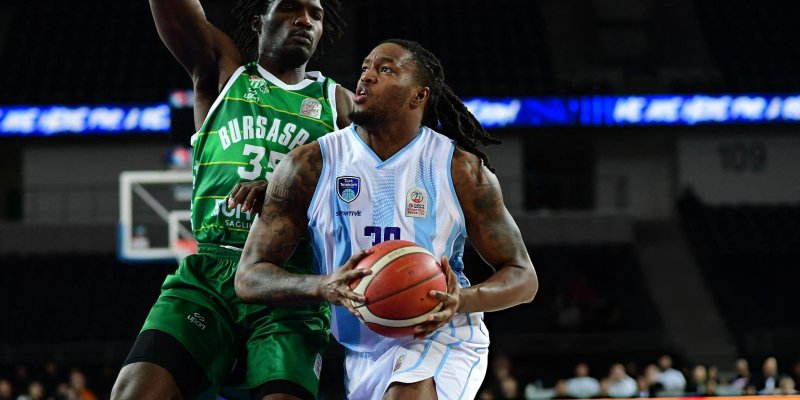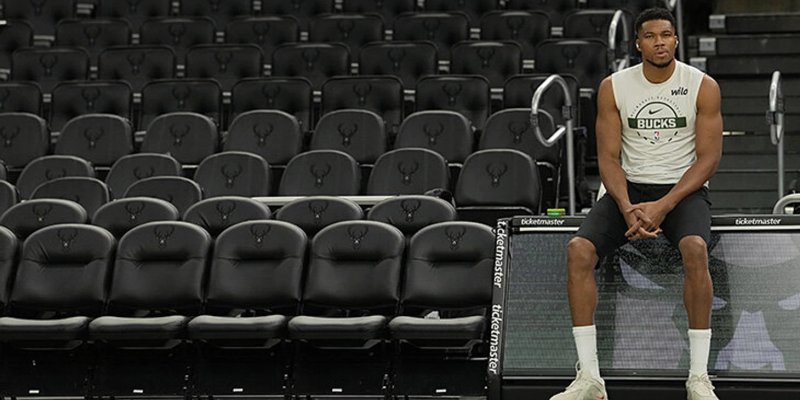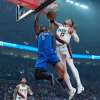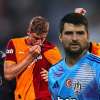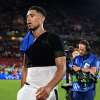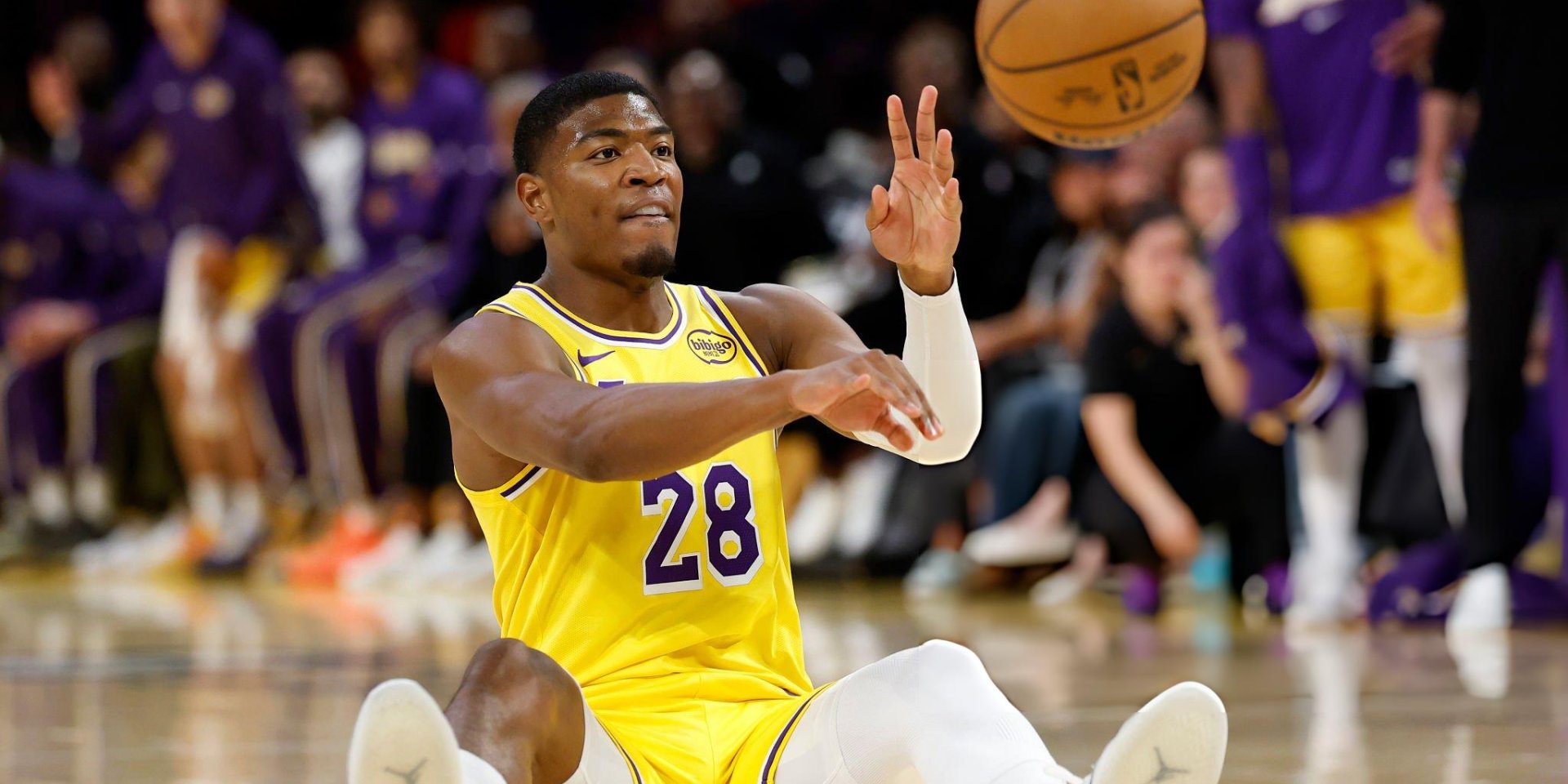
In Los Angeles, wins are usually wrapped in a glossy package — a crown, spotlights, close-ups of the King. This fall it suddenly became clear that the "Lakers" can live without the usual set pieces. LeBron James skipped the regular-season opener for the first time in his long career, Luka Dončić played through pain and was ruled out for at least a week — and the team… didn’t crumble. On the contrary, it stayed competitive and at times downright audacious. Austin Reaves settled comfortably onto the vacant throne and started paying tribute with both spectacle and numbers. Why does that matter — not only for the standings but for the balance of power inside the organization? Let’s take it step by step.
Not Soft Opponents: Why This Stretch Isn’t a Throwaway Assignment
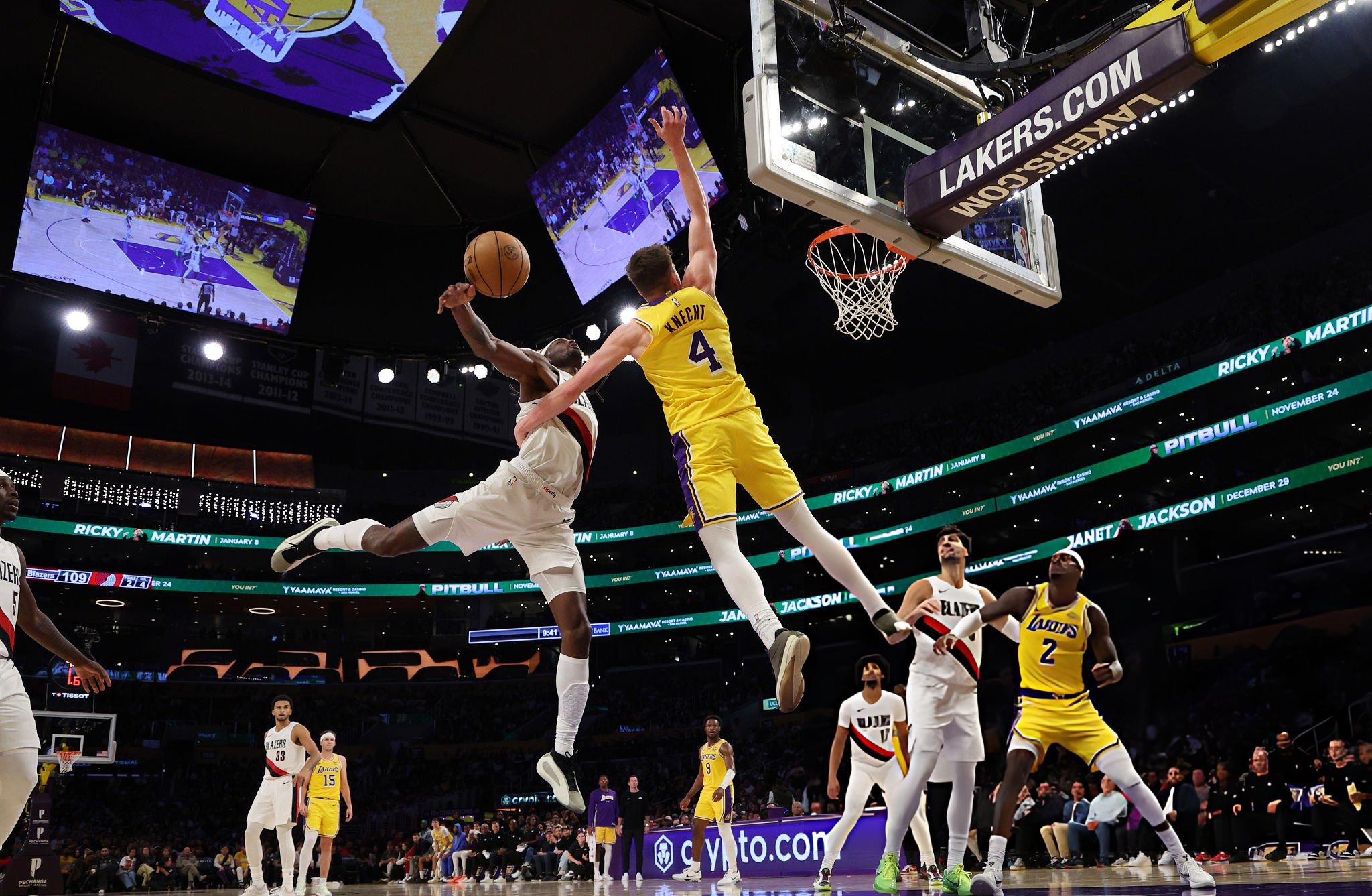
It’s tempting in October to chalk the success up to weak opposition. Not here. The Minnesota Timberwolves and Golden State Warriors sit firmly in the bookmakers’ inner circle of contenders, while the Sacramento Kings keep pounding on the playoff door with a drummer’s persistence. Even the young and brash Portland Trail Blazers aren’t a freebie right now: after Chauncey Billups’s arrest and Tiago Splitter’s temporary appointment as head coach, they’ve won three of four — the only loss to the Clippers — and grabbed loud wins over the Warriors and the Jazz.
On top of that, the "Lakers" had more than holes — they had gashes. They faced Portland without seven players. Among the absentees were names like Adou Thiero and Maxi Kleber (no great loss), but also working horses Marcus Smart and Gabe Vincent. The latter two don’t light it up often, yet they supply defense, energy, and ball-handling. Against Minnesota the rotation shrank to almost six-and-a-half. Dalton Knecht logged 36 minutes — the practice phenom who, in official games, couldn’t hit the ocean for a while. Jaxson Hayes, Nick Smith Jr., and Bronny James mostly lived on crumbs while the starters caught their breath.
The point is these weren’t highlight blowouts but razor-thin wins. In both games the outcome teetered on a knife’s edge and could easily have flipped the other way. And it’s precisely these points in October that turn to gold in April.
In the West, the Price of a Win Is Half a Step: The Math of Small Margins
Last season showed how brutally compressed the West’s upper half is: the gap between third and ninth in the conference was just two losses — 50–32 versus 48–34. In that reality the "Lakers" must learn to win without stars and without their usual rotational depth. Stealing a close one, biting off points from sturdy middle-class teams, not drowning in back-to-backs — that isn’t “cosmetics,” it’s the foundation of future seeding.
And the calendar isn’t merciful: three games in four days, two on the road. Despite all the limits, LAL look less brittle than a year ago. The team is still narrow in options but noticeably denser in character. Sometimes, that’s enough.
"Do Referees Help?" No. Style Gets You to the Line
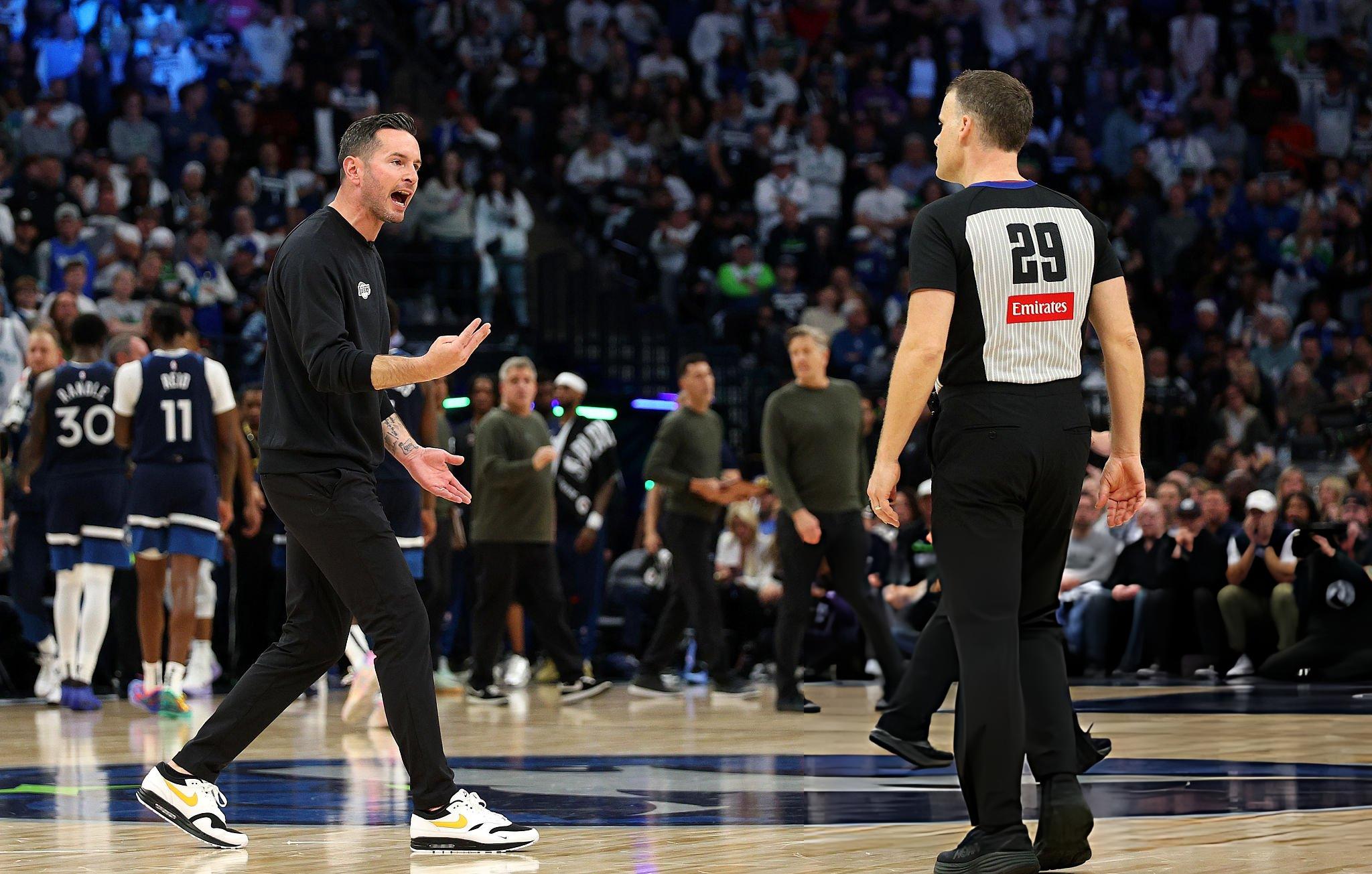
Yes, in the fourth quarter the Timberwolves felt a friendly breeze in the whistle — a couple of borderline calls went their way when the visitors led by double digits. That happens in the NBA. But overall the "Lakers" aren’t living off “special relationships” with officials; they’re living off their offensive model. They’re in the league’s upper group in free throws per game, and they sit near the top in free-throw differential (around +10 attempts; only Houston is higher). The sample is small and numbers always flatten out over distance — that’s how the first month goes.
The key isn’t mythology; it’s geometry. The more you attack the paint, the more contact you get — and the more you visit the stripe. Conversely, the more aggressively an opponent fires from deep, the less physical contact and the fewer whistles there are. The Rockets opened dead last in three-point attempt differential: over four games they took 48 fewer threes than their opponents (-12 per game). Guess who is next to last? Right, the "Lakers". Fifty fewer attempts — about -10 per game.
Yet Redick’s team ranks fourth in points in the paint (57.2). Say, against the Timberwolves both teams took 22 free throws, but the Wolves scored only 44 in the paint while allowing 60. And that’s with Rudy Gobert playing 38 minutes without foul trouble. The loss grows from there.
The High Ball Screen as the "Lakers" Language: Space, Reads, and Quick Decisions
With LeBron out and Luka nicked up, Redick’s group has one truly tuned mechanism left — a high screen and maximum spacing. Typically, Deandre Ayton sets the pick for Reaves; two teammates stretch to the corners, the third parks at the 45. Ayton isn’t a screen artisan, but size rules: slipping through that “wall” without losing time is hard. Reaves has learned to seat the defender on his back, slide into the mid-paint, and hold an entire decision tree in his head at once — layup, kick-out, or the short pass to the big.
Ayton’s scoring role is honest and clear. At the rim he’s mostly dangerous on alley-oops and put-backs; but after the catch he hits with strong percentages from 3–4 meters — provided he doesn’t overthink it. “Catch — shoot” works; “catch — think” breeds doubt and mistakes. With the Slovenian on the floor, that looked like a natural load for the big — Luka found the center beautifully on the short roll. After he sat, the model stayed. That’s the biggest compliment to the staff: no need to reinvent the bike mid-ride.
The Perimeter Is Quiet: Long-Range Artillery Is Limping
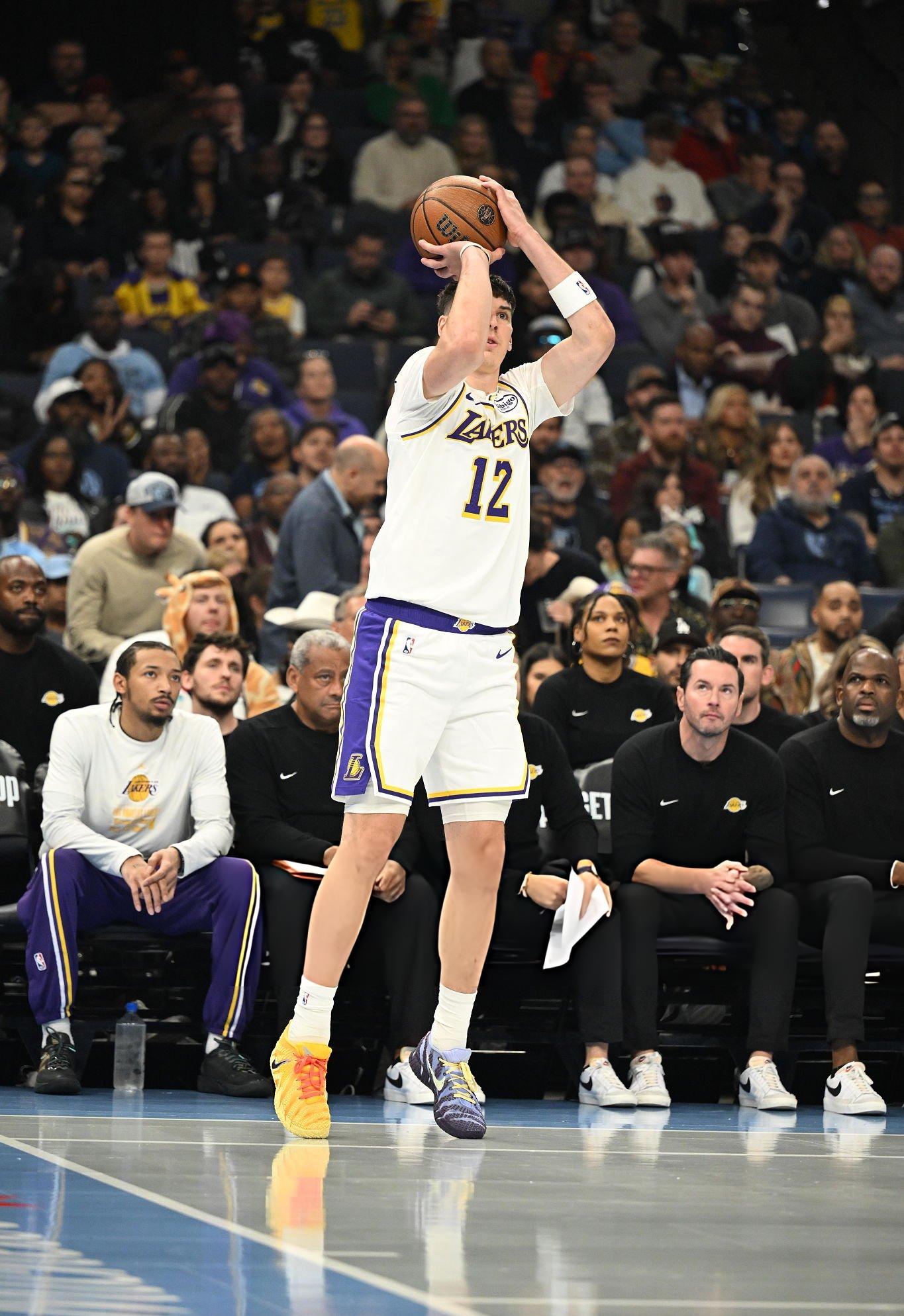
This is where the problem lives — from three. Last season the "Lakers" tried to keep up with the times: even without a pure shooters’ roster, they launched and made threes a touch above league average. In the spring, Minnesota calmly stripped it for parts and won the series.
No “shooters for Luka” arrived in the summer. Right now, the dependable perimeter pieces are Austin Reaves (15/39 — ~38.5%), Rui Hachimura (8/20 — 40%), and the pleasant surprise Jake LaRavia (9/18 — 50%; and 5/6 in the key game versus the Wolves). The rest is nerves: Dončić 7/22 — fine; Knecht 3/16, Vincent 2/10, Smart 1/7. Jarred Vanderbilt polished corner threes in the summer, but five attempts in five games — all misses.
With that narrow a perimeter threat you can’t count on offensive width. By share and accuracy from deep, LAL sit in the league’s bottom third. The percentage might creep up over time, but opposing scouts are already drawing arrows into the paint: help off the arc, choke the lane. If the role players don’t start hitting, truly dry days are coming for the offense.
Defense Under Construction: The Idea Is There, the Synchrony Isn’t
On their end, the "Lakers" hover around 20th in defensive efficiency — honest, not inspiring. The philosophy is clear: clog the paint, erase easy ones at the rim, live with perimeter risks. The side effect is a buffet of open threes for opponents and about 40% makes — hence the dips.
Add the human factor. LeBron barely trained in the offseason, Smart and Vincent bowed out almost immediately, and the rotation keeps wobbling. This defense won’t stand on “long arms” and athleticism alone — it needs synchrony and automations. Building those takes weeks. The positive? The team minimizes fast-break leakage. Portland managed only nine early-offense points, Minnesota fourteen. As insurance for a shaky autumn, that works.
Austin Reaves, 'Star for a Minute' Edition: Highlights Without Self-Deception
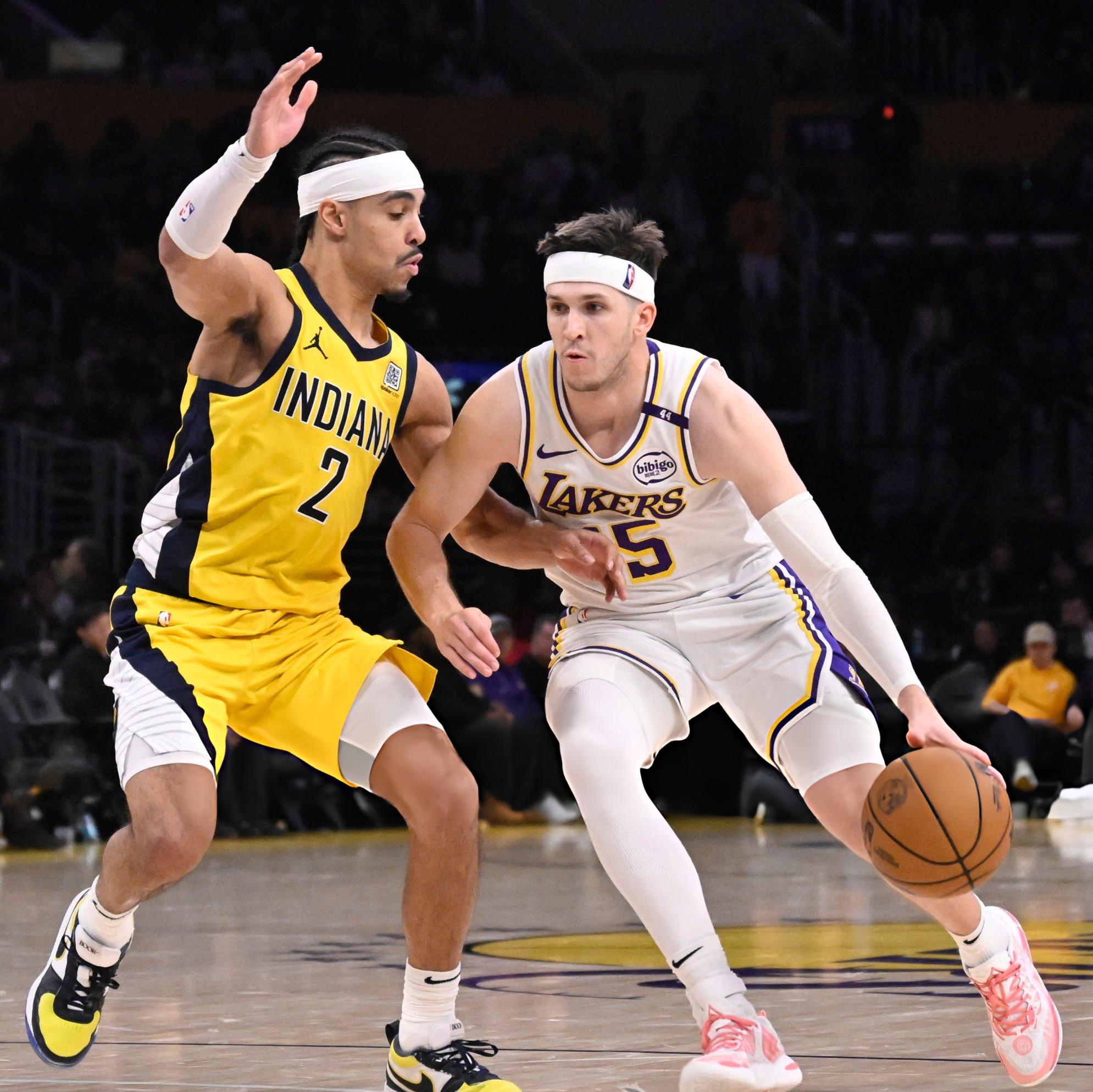
While Luka heals, Austin staged a private fireworks show: 92 points in 27 hours, then 28 plus 16 assists against Minnesota. The efficiency is grown-man basketball. You can’t hold that ceiling for long — and that’s fine: October is generous with personal bests. Kevin Garnett’s line about Reaves being ready to be a No. 1 option on a simpler team isn’t from thin air.
It’s a double win for club and player. First, the “recasting” of a bad playoffs is proceeding with confidence — the psychological barrier has cracked. Second, the cash counter started: Reaves has a $14.9 million player option for 2026–27, and it’s hard to imagine a scenario where he exercises it. The market will pay more, and seven or eight teams will have serious cap room next summer.
Who He Can Be Over the Long Haul: The Hayward Template and Conditions for Success
Profile-wise, Reaves now looks dangerously like peak Gordon Hayward: a tidy first option, 20–22 points on a solid middle-class team, plus feel and versatility. That isn’t the NBA’s top-20 club, but in the right ecosystem it’s a sturdy “No. 1.” Two conditions apply. First, a team defense above league average so you’re not paying the tax on offense. Second, moderate competition — read: the East. In Los Angeles both boxes are still open questions, but the trajectory is right.
Meanwhile, the trade value grows. Buyers for a “tasty” contract by the deadline always appear. Turning Austin into a narrow 3&D makes little sense — the niche is saturated and the price has dropped. In the same five with Dončić and LeBron there won’t be much pounding the ball anyway; that’s one more reason to give him more on-ball reps right now — for development and for the shop window.
Pelinka’s Construction Set: Who Fits Next to Luka and What Happens in the Summer
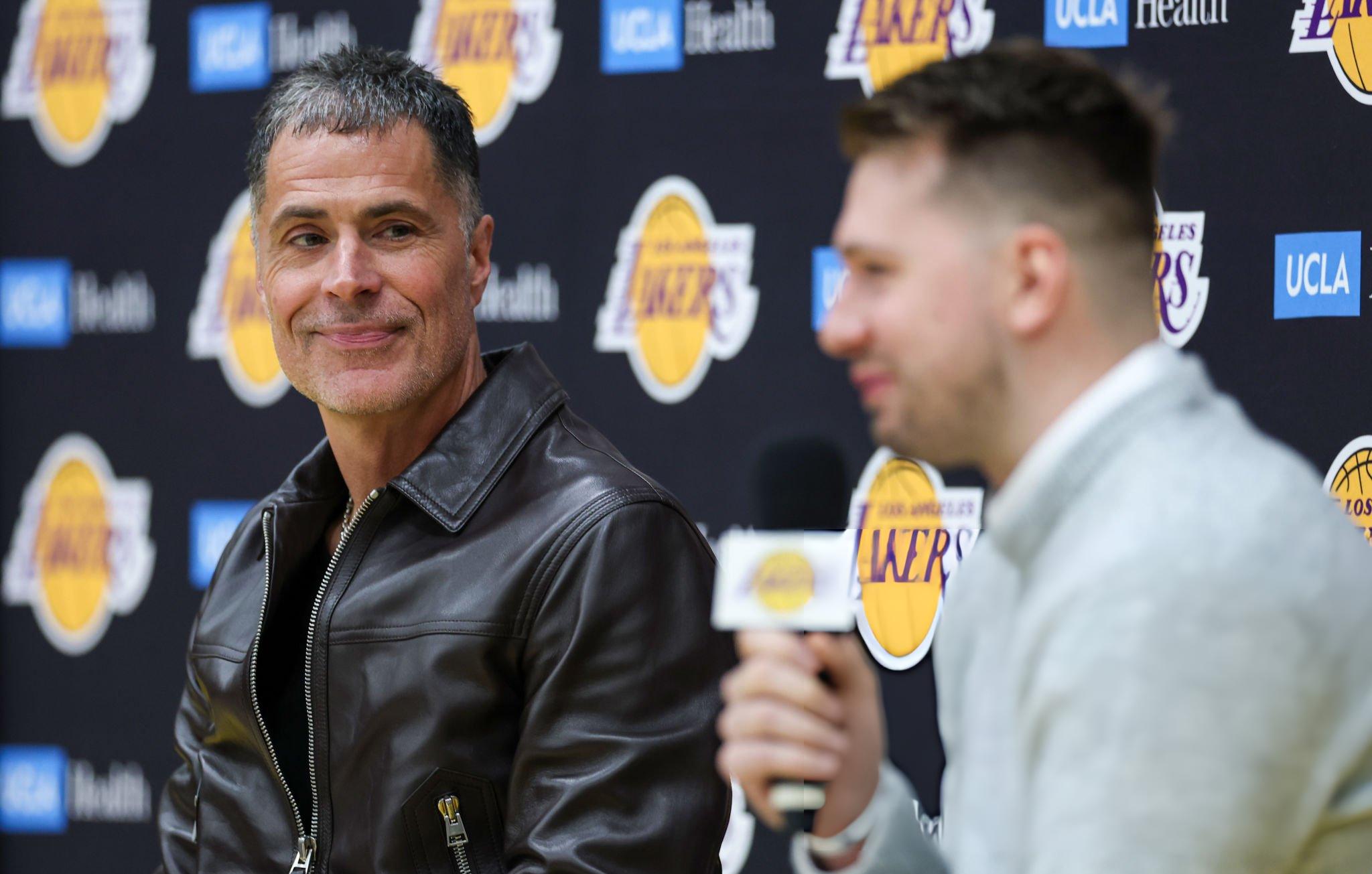
The fork for management is obvious. In the summer the "Lakers" will open meaningful room on the payroll: the deals of LeBron, Hachimura, Vincent, Kleber, and Hayes expire. Instinct says Rob Pelinka will aim at a bigger, more defensively reliable fit next to Luka than the current profiles. The team still lives without an elite rim-runner and without “pure” 3&D forwards — lots of parts, not all of them a mechanism. The roster feels “intermediate,” primed for transformation.
The Politics of Emotion: Quiet Wins, Quiet King
Wins without LeBron aren’t only about the table. They’re also about media balance. When the team opens 3–2 and beats respectable opponents, it’s unprofitable for the King to rock the boat — loud lines and light sabotage don’t sell against a winning backdrop. We’ve seen this “mode”: from detachment versus the Warriors to smiles, high-fives, and growing engagement two days later. Trust this: if a slump arrives, the loaded quotes will come too — from James himself or via the “right” journalists.
The Final Touch: Small Wins as the Currency of a Bigger Future

Does all this guarantee a splashy trade and a “correct” finale? Of course not. The "Lakers" are still limited in depth, unstable on the perimeter, and assembling the defense on the fly. But something important is happening. The team holds its results bar even without two suns, Reaves is a legitimate claimant to a big role (and a big check), and the club is sliding into a stronger position — both at the bargaining table and inside its own hierarchical forest.
In a West where third and ninth are separated by two losses, each such October win readily finds its place on the April calendar. And believing in a happy scenario gets a shade easier — not because the "Lakers" suddenly became perfect, but because they learned to win when everything is against them. In the NBA, that’s the most reliable currency.

